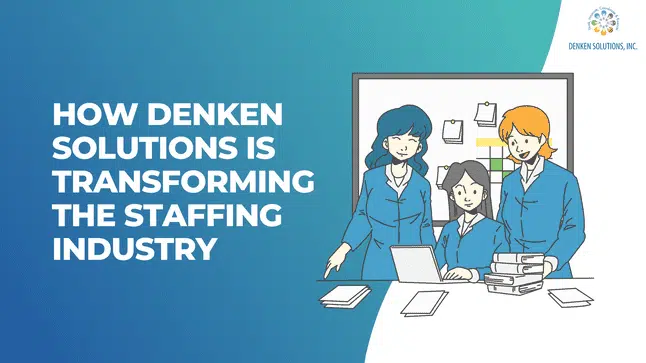The uncertainties in the market conditions leading to economic crises
The uncertainties in the market conditions leading to economic crises are challenging for businesses, especially when they lack the right resources and strategies. During such periods, organizations operating in almost every industry try to find and develop strategies in which they can maintain business efficiency by managing financial resources without overburdening their human resources. One of the best strategies to deal with economic downturns at present is the utilization of contingent workers.
Individuals seeking to develop their careers as contingent workers usually work as independent contractors, temporary employees, or gig workers, assisting organizations in meeting their short-term business or project needs. According to a report by Statista, the number of people working as contingent workers is projected to increase to 86.5 million by the end of 2027. With the continued heating up of the global economy, it is high time for organizations to restrict periodic downturns in their businesses by switching to contingent labor.
Top reasons to utilize a contingent workforce during economic downturns
A contingent workforce makes businesses flexible
Flexibility is one of the greatest advantages that contingent workers offer businesses during economic downfalls. Based on fluctuating demands for products or services, businesses can adapt and scale their workforce without facing the pressure of long-term employment commitment or legal or financial repercussions. For example, a retail company can scale its workforce during the holiday season using contingent staff, avoiding long-term hiring costs.
Contingent workers fulfill staffing needs during peak hours
While sailing through the complexities and challenges during economic downturns, it becomes difficult for organizations to maintain a full-fledged workforce. To save expenses, many employers initiate mass layoffs. Such situations can be avoided with a contingent workforce. Organizations can remain fully staffed and get additional hands to support their business during peak hours.
A contingent workforce eliminates typical operating expenses
Contingent staffing proves to be a valuable strategy for reducing overhead expenses associated with permanent or full-time employment. For instance, temporary workers often do not require benefits like healthcare or retirement contributions. By paying them for the hours they work or the tasks they perform, businesses can attain financial stability.
Contingent workforce improves retention rates of full-time employees
Retention of fixed and full-time employees is a major benefit of contingent staffing that employers often overlook. By deploying contingent workers during peak times or project-specific circumstances, employers can balance workloads by distributing tasks between temporary and permanent employees. This reduces burnout, boosts motivation, and cultivates loyalty among existing teams.
Contingent workers introduce hard-to-find skills and competencies
With a contingent workforce, organizations not only get the benefit of preventing staffing gaps during economic downturns but also the opportunity to bring distinguished skills and knowledge to the teams. For instance, tech startups often hire contingent software developers to bring in niche expertise for short-term projects. Contingent staffing also connects organizations with a diverse pool of vetted talents from across the world, enabling them to operate efficiently.
Best practices to leverage a contingent workforce during economic downturns
Identify critical business areas where contingent workers can contribute
Before deploying contingent workers, employers must identify specific roles and responsibilities they can fill. For example, project-based roles such as data analysis, customer support during peak seasons, or specialized IT tasks are ideal for contingent staffing.
Make a transition to agile staffing strategies
Organizations should consider replacing traditional, direct-hire models with agile staffing approaches. This strategy allows businesses to engage and release temporary employees based on internal needs or external market conditions, saving costs and improving efficiency.
Reinforce business resilience and adaptability by extending reach to a global talent pool
Employers are encouraged to partner with experienced staffing agencies like Denken Solutions to access a diverse database of pre-screened talent. This approach ensures businesses can tap into skilled professionals worldwide, strengthening their adaptability to economic challenges.
Provide capital for meticulous training and onboarding processes
Though contingent workers are often experienced, organizations should invest in tailored onboarding processes. This ensures contingent workers understand the company’s goals and can collaborate effectively with existing teams.
Conduct periodic assessments of the contingent workforce
Employers must periodically evaluate the performance of contingent workers. Performance data can inform resource reassignment and workforce strategy improvements, ensuring optimal business outcomes.
Conclusion
Developing and maintaining a contingent workforce strategy is crucial for businesses to mitigate economic challenges. Besides enabling organizations to remain flexible and fulfill their staffing needs during economic downturns, contingent staffing helps them get hold of hard-to-find skills and competencies. A contingent workforce also helps in eliminating overhead costs and improving the retention rate of existing employees.
To maximize the benefits of a contingent workforce, employers should:
- Identify critical business areas requiring contingent support.
- Adopt agile staffing approaches.
- Partner with staffing agencies to access a global talent pool.
- Provide thorough onboarding and training for contingent workers.
- Continuously assess and refine workforce strategies.
By implementing these strategies, organizations can effectively navigate the uncertainties of economic crises while maintaining operational efficiency and workforce morale.



